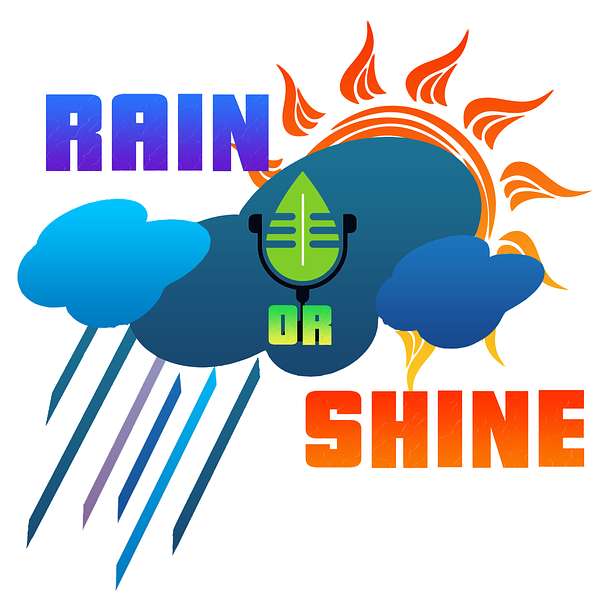
Come Rain or Shine
This podcast is a collaborative product of the Southwest Climate Adaptation Science Center, Ecoimpact Solutions, and New Mexico State University. We highlight stories to share the most recent advances in climate science, weather and climate adaptation, and innovative practices to support resilient landscapes and communities. We believe that sharing forward-thinking and creative climate science and adaptation solutions will strengthen our collective ability to respond to even the most challenging impacts of climate variability in one of the hottest and driest regions of the world.
Sign up for email alerts and never miss an episode: https://forms.gle/7zkjrjghEBLrGf8Z9.
Funding for the podcast comes from the U.S. Geological Survey, Ecoimpact Solutions, and New Mexico State University.
Episodes
Galloping Goats and Grazing Management

Rangeland Restoration in the Great Basin

Beekeeping Program at Institute of American Indian Arts

Celebrating Milestones: 10 Years of Supporting Resilience

Science And Practical Solutions To Support Ecological Restoration

Reforestation: The Trees Are Planted, Now What?

Reforestation: Plant Here, Not There

Reforestation: The John T. Harrington Forestry Research Center

Reforestation: It All Starts With A Seed

Exploring Nature-Based Solutions

Burping Cows! Measuring Methane Emissions from Cattle

Agrivoltaics: Producing Food and Energy in the Same Place

Solutions for Sustaining Environmental Flows

Climate Change, Coastlines, and Aquaculture

Fifth National Climate Assessment, Southwest Chapter: Health, Water, Agriculture, and Wildfire

Inside the Fifth National Climate Assessment, Southwest Chapter

Harvesting Hope: Tackling Food Waste, Hunger, and Climate Change

Indigenous Agriculture and Climate Resilience

The Scoop on Kernza®, a Multi-functional Perennial Grain Crop

Old Growth Grasslands

A Closer Look at California Wildfires

After-Fire Reforestation: The John T. Harrington Forestry Research Center

Cultural Burning in Northern California

Sarah Ray on Navigating Climate Anxiety
